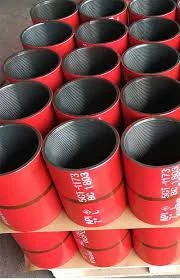- Afrikaans
- Albanian
- Amharic
- Arabic
- Armenian
- Azerbaijani
- Basque
- Belarusian
- Bengali
- Bosnian
- Bulgarian
- Catalan
- Cebuano
- Corsican
- Croatian
- Czech
- Danish
- Dutch
- English
- Esperanto
- Estonian
- Finnish
- French
- Frisian
- Galician
- Georgian
- German
- Greek
- Gujarati
- Haitian Creole
- hausa
- hawaiian
- Hebrew
- Hindi
- Miao
- Hungarian
- Icelandic
- igbo
- Indonesian
- irish
- Italian
- Japanese
- Javanese
- Kannada
- kazakh
- Khmer
- Rwandese
- Korean
- Kurdish
- Kyrgyz
- Lao
- Latin
- Latvian
- Lithuanian
- Luxembourgish
- Macedonian
- Malgashi
- Malay
- Malayalam
- Maltese
- Maori
- Marathi
- Mongolian
- Myanmar
- Nepali
- Norwegian
- Norwegian
- Occitan
- Pashto
- Persian
- Polish
- Portuguese
- Punjabi
- Romanian
- Russian
- Samoan
- Scottish Gaelic
- Serbian
- Sesotho
- Shona
- Sindhi
- Sinhala
- Slovak
- Slovenian
- Somali
- Spanish
- Sundanese
- Swahili
- Swedish
- Tagalog
- Tajik
- Tamil
- Tatar
- Telugu
- Thai
- Turkish
- Turkmen
- Ukrainian
- Urdu
- Uighur
- Uzbek
- Vietnamese
- Welsh
- Bantu
- Yiddish
- Yoruba
- Zulu
Bull Plug Pipe Configuration and Arrangement Guide for Optimal Performance
Understanding Bull Plug Pipe Layout
In the world of piping systems, the bull plug pipe layout is a crucial component that often goes unnoticed but plays a significant role in the overall functionality and efficiency of various systems. This article aims to shed light on the bull plug pipe layout, its applications, and its significance in industrial and engineering contexts.
A bull plug is essentially a type of fitting that is used to close the end of a pipe, serving as a seal. The design typically features a rounded end, which distinguishes it from standard plugs and provides a more secure fit. Bull plugs are generally made from various materials, including metals like steel and brass or plastics that are resistant to corrosion. This material versatility allows them to function effectively in a wide range of environments, from residential plumbing to heavy-duty industrial applications.
Applications of Bull Plug Pipe Layout
1. Sealing Systems Bull plugs are primarily used to seal the ends of pipes, preventing the escape of fluids, gases, or vapors. This sealing capacity is crucial in systems that transport pressurized substances, ensuring safety and efficiency.
2. Maintenance and Inspection In many piping systems, bull plugs provide access points for maintenance and inspection. By temporarily removing the bull plug, technicians can check for blockages, corrosion, or other issues within the pipeline. This practice promotes regular upkeep and can help extend the lifespan of the piping system.
3. Pressure Management In high-pressure systems, bull plugs can play a significant role in managing pressure and ensuring that the pipe doesn't burst due to excessive force. The rounded design distributes pressure evenly across the surface, reducing the risk of failure at weak points.
bull plug pipe layout

4. Customization and Adaptability Bull plugs are available in various sizes and configurations, allowing them to fit into different piping layouts seamlessly. This adaptability makes it easier for engineers to design and implement piping systems tailored to specific needs.
Importance in Industrial Settings
In industrial settings, the integrity of piping systems is paramount. A failure in the piping layout can result in costly downtime, safety hazards, and significant environmental impacts. Therefore, the choice of fittings, including bull plugs, must be made with careful consideration of the materials, pressures, and substances involved. Bull plugs help in preventing leaks, ensuring that systems operate smoothly and efficiently.
Furthermore, with advancements in piping technology, the design and material options for bull plugs continue to evolve. Innovations in elastomers and other composite materials are leading to enhanced durability and resistance against extreme temperatures and corrosive substances. This evolution is critical as industries push for more sustainable and efficient operations.
Conclusion
In conclusion, the bull plug pipe layout is not merely a simple fitting; it is an essential element of many piping systems across various industries. Its ability to seal, maintain, and adapt makes it invaluable in ensuring the efficiency and integrity of fluid transportation systems. Understanding the importance of this fitting can lead to better design choices and improved operational reliability in both industrial and residential applications. As engineering continues to advance, the role of bull plugs is likely to grow, further solidifying their place in the realm of piping solutions.
-
Tubing Pup Joints: Essential Components for Oil and Gas OperationsNewsJul.10,2025
-
Pup Joints: Essential Components for Reliable Drilling OperationsNewsJul.10,2025
-
Pipe Couplings: Connecting Your World EfficientlyNewsJul.10,2025
-
Mastering Oilfield Operations with Quality Tubing and CasingNewsJul.10,2025
-
High-Quality Casing Couplings for Every NeedNewsJul.10,2025
-
Boost Your Drilling Efficiency with Premium Crossover Tools & Seating NipplesNewsJul.10,2025







